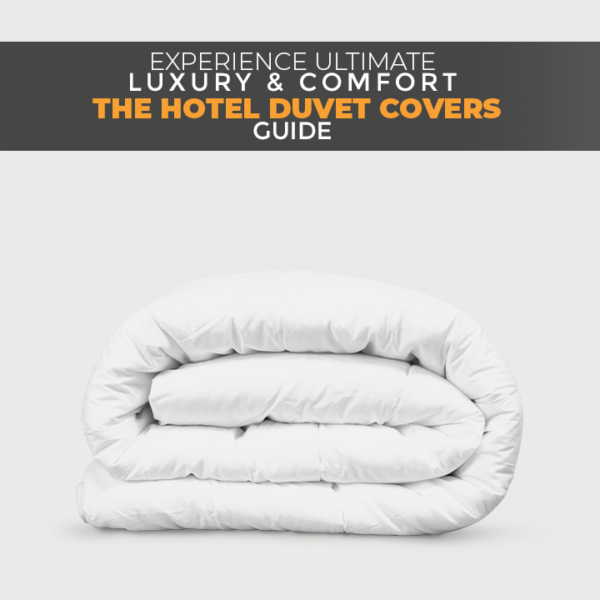The production of hotel bed linens is a process that has developed rapidly over time. Archeological findings highlight that weaving is a process that has existed for millennia. The modern process of weaving is supported by the technology to produce bed linens at a commercial level. The demand for hotel bed linens increased as the tourism sector stretched across the globe, and with the increase in demand for the best bed linens came a surge in hotel textile technology to produce bed linens for hotels on a mass scale.
Let’s conduct a comparative analysis of the two main components that are a part of the manufacturing of hotel bed linens: the single-pick weave and the double-pick weave.
Table of Contents
What is Weaving?
To understand the difference between a single-pick and a double-pick weave, it is important to understand the process of weaving, which involves overlapping one thread over another. The process of weaving is essentially executed by overlapping these threads by following a bi-directional motion. The threads following the vertical motion are known as the warp threads, while the threads following the horizontal motion are called the weft threads.
The process of weaving has a variety of types that are derived by carrying out the process in such a manner that leads to the formation of different patterns and products, which may include bed linens for hotels or even dresses for people. The variation in the pattern comes from the difference in the interlinking frequency of warp and weft threads.

Differences between Single-Pick Weave and Double-Pick Weave
There are a number of characteristics that may aid an untrained eye to differentiate between a fabric made through the single-pick weave and a fabric made through the double-pick weave.
| Single-Pick Weave | Characteristics | Double-Pick Weave |
| Dresses, premium bed linens | Types of Fabric Produced | Industrial linens, sacks, and towels |
| Soft and smooth | Texture | Coarse and rough |
| High | Interlacements | Low |
| Low | Friction | High |
| High, due to smoother surface | Printability or Dyeability | Low, due to rough surface |
| 180 or above | Threadcount | Below 180 |
| High | Density | Low |
 |
 |
Difference In Manufacturing
As mentioned in the table above, the different characteristics of both types of weave make them suitable for different needs.
Single-Pick Weave
The manufacturing process of single-pick weaves includes the interlinking and overlapping of the two threads, that is, the warp thread and the weft thread. The overlapping procedure for a single-pick weave is such that one warp thread passes successively over one weft thread and then under the next weft thread. The successive overlapping threads produce a sturdier and tighter weave that forms a softer and more durable fabric.
This type of weave is best suited for producing hotel bed linens and hotel bedding to provide higher durability for hotel usage and comfort for visitors. DZEE USA’s Icon – 200 percale bed sheets are produced using the single-pick weaving method.
Double-Pick Weave
The process that involves using the double-pick weave follows an overlapping procedure that is based on the warp thread passing successively over two weft threads. The successive overlapping of two weft threads leads to the formation of rougher and rugged fabric that is most suitable for industrial usage.
Let’s Explore Weave Technology:
Mostly, the weaves that are used for producing bed linens at a commercial scale include twill weaves, percale weaves, and satin weaves.

- Twill Weaves
The twill weave is a basic type of textile weave. The main identification of a twill-weaved fabric is the diagonal rib pattern that is formed on it due to the weaving process. A twill weave is known for producing a fabric that is more drapable than the plain weave but also more sturdy due to its high thread count. DZEE USA’s Icon – 300 is a collection that features premium bed sheets and has been produced using the twill weave.
- Satin Weave or Sateen Weave
Fabrics that are categorized as Satin are produced using this weaving method. A fabric that is produced through this method has a characteristic lustrous and radiant surface. It is used in the production of various textiles such as satin bed sheets for hotels and homes, dresses, and upholstery.
- Percale Weave
Percale weaves are known for producing fabric that is durable and has a crisp texture. Unlike the satin weave, a percale weave is known for having a matte and somber surface. The minimum thread count for a percale weave is 180.
Wrapping It Up
To wrap it up, the process of weaving has developed over time to produce fabrics for both softer and harsher purposes. Single-pick weave that produces a softer and tighter fabric is used for hotel bed linens; meanwhile, a double-pick weave forms a sturdier and industrial-level fabric such as sacks. There are also other types of weaves that are identified through their weaving patterns, such as the satin weave that is used for producing satin bed sheets. Understanding the weaving process not only enhances the basic information behind fabrics and textiles but also aids in making well-informed decisions. You can also learn the Features to Look for Before Buying Hotel Bed Linen.







